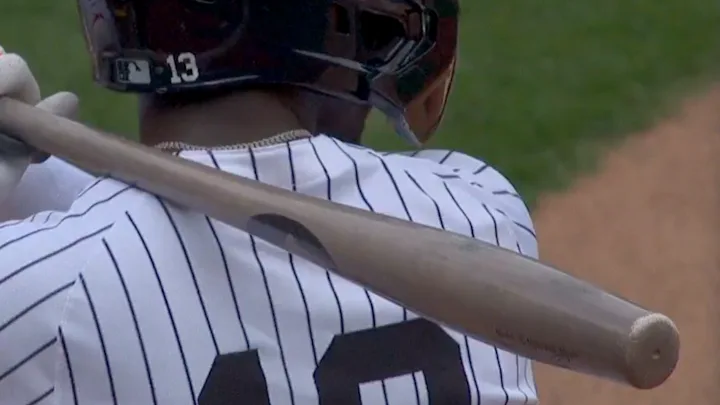The crack of the bat has always been the sound of summer at Yankee Stadium. But this season, it’s accompanied by a new buzzword echoing through the dugout and across the league: the “Torpedo.” In the wake of a historic, record-tying 15-home run opening weekend, all eyes are on the innovative piece of lumber that’s become the Yankees’ not-so-secret weapon.
While Aaron Judge was busy launching three homers with his classic model, a growing contingent of his teammates were making waves with a bat that looks and performs differently. This isn’t about magic; it’s about a calculated push to win on the margins through cutting-edge design.
What Exactly Is a ‘Torpedo’ Bat?
Forget any notions of illegal tech or gimmicks. Major League Baseball has confirmed the “Torpedo” is 100% within regulations. The innovation is purely in its geometry.
Imagine a traditional baseball bat: its thickest point, the barrel, is out near the end. Now, picture shifting that maximum diameter closer to the hands, creating a fatter barrel near the handle that tapers toward a skinnier end-cap. That’s the Torpedo.
As shortstop Anthony Volpe demonstrated, holding last year’s model next to the new one, the difference is immediately visible. “The bigger you can have the barrel where you actually hit the ball, it makes sense to me,” Volpe explained, succinctly summarizing the bat’s entire philosophy.
TRENDING: Yankee Stadium Capacity: How Many Fans Can It Really Hold?
The Analytics That Sparked a Innovation
This breakthrough isn’t accidental; it’s a product of the Yankees’ deep analytical dive. The concept is credited to Aaron Leanhardt, a former Yankees analyst, who identified a specific hitter tendency.
During a YES Network broadcast, announcer Michael Kay revealed the team’s data showed Volpe frequently made contact on the “label” of the bat—a spot closer to the handle that typically results in weak outs. The solution? Redesign the bat to put more wood precisely in that impact zone.
The goal is simple: maximize the sweet spot’s size and location for each individual hitter’s swing, creating a larger margin for error on every pitch. It’s a personalized approach to equipment, moving beyond the one-size-fits-all model.
Player Reactions: From Skepticism to Belief
The adoption of the Torpedo bat across the clubhouse has been organic, not mandated. The results are doing the talking.
-
Cody Bellinger, who first saw one last year with the Cubs, was initially amused by its unique look, noting some thought it had a “square barrel.” He’s since become a convert, citing the improved weight distribution. “The weight is closer to my hands, so I feel as if it’s lighter in a way… that was the biggest benefit.”
-
Aaron Judge, however, remains a holdout. After a three-homer, eight-RBI game with his standard bat, he joked, “What I’ve done the past couple of seasons speaks for itself.” He acknowledged the innovation but sees it as a tool for later in his career if needed.
-
The buzz is also spreading around the league. Players from the Rays and Orioles have already begun dabbling with the model, asking Yankees on base about the unique lumber they’re swinging.
More Than Just Gear: A Philosophy of Marginal Gains
Yankees manager Aaron Boone framed the Torpedo bat within the team’s broader strategy. “We’re trying to win on the margins,” he stated, comparing it to a golfer carefully selecting the perfect club for a shot.
He’s quick to point out that bat model experimentation isn’t new, but the level of data and resources devoted to optimizing player performance is greater than ever. The organization provides the tools and information, but the choice to use them always rests with the player.
So, is the Torpedo bat the sole reason for the home run barrage? Even its users are cautiously optimistic. Nestor Cortes, the former Yankee who gave up four Torpedo-fueled homers on Saturday, dismissed the idea, crediting the hitters, not the hardware.
Anthony Volpe may have put it best, touching on the crucial mental component of the game: “It’s probably just a placebo… but any 0.01 percent mentally that it gives you confidence, it helps.”
In a game where the difference between a pop-up and a home run can be a matter of millimeters, the Yankees are betting that a smarter bat can provide that crucial, confidence-building edge. And if the first weekend is any indication, that bet is already paying off.
